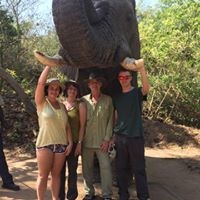Which of the following is extracted from wetlands?
Peat, sometimes known as turf, is an accumulation of partially decayed vegetation or organic matter.
Peatlands, particularly bogs, are the primary source of peat; although less-common wetlands including fens, pocosins, and peat swamp forests also deposit peat.
Peat is not a renewable source of energy. It forms when plant material does not fully decay in acidic and anaerobic conditions. It is composed mainly of wetland vegetation: principally bog plants including mosses, sedges, and shrubs. As it accumulates, the peat holds water. This slowly creates wetter conditions that allow the area of wetland to expand.
Most modern peat bogs formed 12,000 years ago in high latitudes after the glaciers retreated at the end of the last ice age. Peat usually accumulates slowly at the rate of about a millimetre per year.
Traditionally peat is cut by hand and left to dry in the sun. But for industrial uses, companies may use pressure to extract water from the peat, which is soft and easily compressed, and once dry can be used as fuel. In many countries, including Ireland and Scotland, peat was traditionally stacked to dry in rural areas and used for cooking and domestic heating.
Peat can be a major fire hazard and is not extinguished by light rain. Peat fires may burn for great lengths of time, or smoulder underground and reignite after winter if an oxygen source is present.
More Info:
en.wikipedia.org





